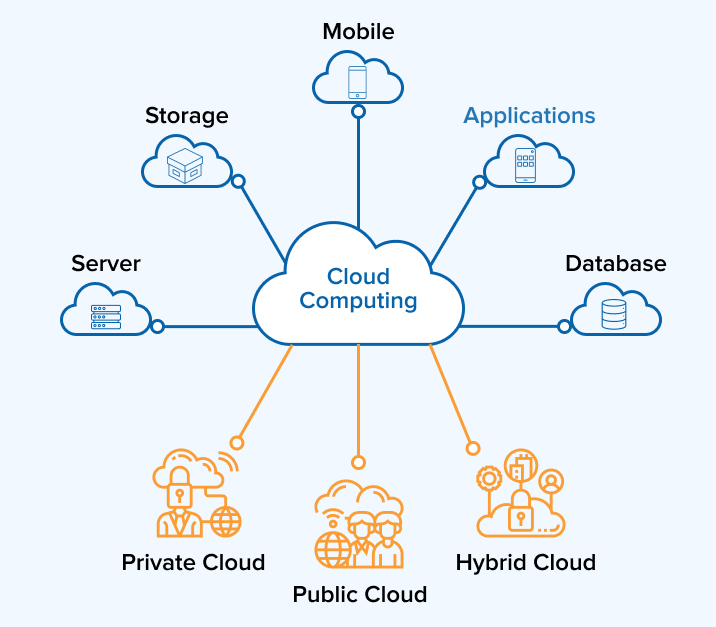Comprehensive Cloud Services: Boost Effectiveness and Safety And Security for Your Firm
Comprehensive Cloud Services: Boost Effectiveness and Safety And Security for Your Firm
Blog Article
Achieve Seamless Scalability With Cloud Services
In the ever-evolving landscape of cloud services, attaining smooth scalability stands as a cornerstone for modern-day organizations looking for to remain versatile and competitive. The mission for smooth scalability with cloud solutions introduces a world of opportunities for those eager to accept the transformative power of dynamic source management.
Benefits of Cloud Scalability
Cloud scalability offers organizations the flexibility to dynamically readjust sources based on demand, making sure optimal performance and cost effectiveness. One essential advantage is the capacity to range resources up or down swiftly in action to changing work. This dexterity allows services to meet changing customer requirements without over-provisioning resources, eventually resulting in set you back savings. Scalability likewise improves performance by making sure that systems can take care of increased traffic or work without experiencing downtime or stagnations. By successfully alloting sources, companies can keep high degrees of efficiency during peak times without unnecessary costs throughout quieter durations. Furthermore, cloud scalability promotes advancement and testing by enabling companies to conveniently check new concepts and scale them as required. This versatility motivates a culture of continuous improvement and adaptation, making it possible for companies to remain competitive in a rapidly evolving market landscape. Eventually, the advantages of cloud scalability expand past price financial savings to incorporate enhanced performance, dexterity, and technology.
Trick Features for Scaling
Reliable scaling in cloud services relies on crucial features that allow organizations to change sources dynamically based on need. One essential attribute for scaling is flexibility, enabling resources to scale up or down in action to rising and fall workloads. This guarantees that companies can fulfill performance needs without over-provisioning sources. An additional key attribute is scalability, allowing systems to handle raised work by including resources perfectly. This function is important for suiting growth without compromising efficiency. Additionally, automation plays a crucial function in scaling by automating the provisioning and de-provisioning of sources based on predefined plans. Automation reduces human intervention, improves effectiveness, and makes certain fast feedback to changing demands. Tracking and analytics devices are also vital for scaling, giving understandings into resource utilization, performance metrics, and potential traffic jams. These devices make it possible for companies to make enlightened decisions and optimize resource allotment for efficient scaling. Generally, these key features jointly encourage companies to attain smooth scalability in cloud solutions.
Applying Auto-Scaling Strategies
To successfully maximize source appropriation and adjust to varying workloads, organizations need to purposefully execute auto-scaling techniques in their cloud solutions facilities. Auto-scaling permits systems to instantly change the variety of calculate sources based on real-time need. There are various auto-scaling techniques that companies can utilize, such as anticipating scaling, which uses historic information to anticipate future source needs, and reactive scaling, which reacts to current work modifications.

Ideal Practices for Scalability
For organizations aiming to enhance their scalability in cloud solutions, implementing best methods is vital for optimum performance and resource monitoring. One key ideal technique is making applications with a microservices architecture. This approach breaks down applications right into smaller sized, independent solutions that can be released, upgraded, and scaled independently, allowing for higher flexibility and scalability.
An additional important practice is utilizing containerization modern technology, such as Docker or Kubernetes. Containers make it possible for the product packaging of applications and their reliances right into separated systems, making it easier to scale components individually and linkdaddy cloud services deploy them regularly throughout different atmospheres.
Furthermore, applying automated release and framework as code (IaC) can enhance scalability initiatives (linkdaddy cloud services). Automation devices like Terraform or Ansible help in provisioning and taking care of resources successfully, reducing manual errors and making it possible for rapid scalability
In addition, monitoring efficiency metrics, establishing up informs, and conducting regular ability planning are crucial practices to ensure positive scalability management. By adhering to these best methods, organizations can achieve seamless scalability in their cloud solutions while maximizing efficiency and resource use.
Surveillance Performance Metrics
When analyzing the effectiveness of cloud services scalability, very closely keeping an eye on performance metrics is necessary for making certain optimum functionality and source appropriation. By constantly tracking essential performance signs (KPIs) such as feedback times, source, throughput, and latency utilization, companies can get valuable understandings into the health and wellness and effectiveness of their cloud framework. Checking efficiency metrics enables for the very early discovery of prospective traffic jams or problems that might affect scalability, enabling positive actions to be taken to address them prior to they intensify.

Conclusion
Finally, accomplishing seamless scalability with cloud services is crucial for companies to maximize efficiency, improve development, and keep high performance degrees during peak times. By leveraging the benefits of cloud scalability, applying auto-scaling strategies, utilizing crucial functions such as flexibility and automation, and adhering to finest practices like application layout and performance surveillance, businesses can efficiently scale their systems while taking full advantage of resource application and performance.
The mission for smooth scalability with cloud solutions unveils a globe of opportunities for those willing to welcome the transformative power of dynamic resource monitoring.
Cloud scalability uses companies the versatility to dynamically adjust resources based on demand, making sure optimal performance and expense efficiency. An additional essential attribute is scalability, enabling systems to manage increased work by including resources perfectly.For companies aiming to improve their scalability in cloud solutions, applying finest practices is important for optimal performance and resource monitoring.When analyzing the performance of cloud solutions scalability, very closely keeping an eye on performance metrics is critical for ensuring optimal capability and source allocation.
Report this page